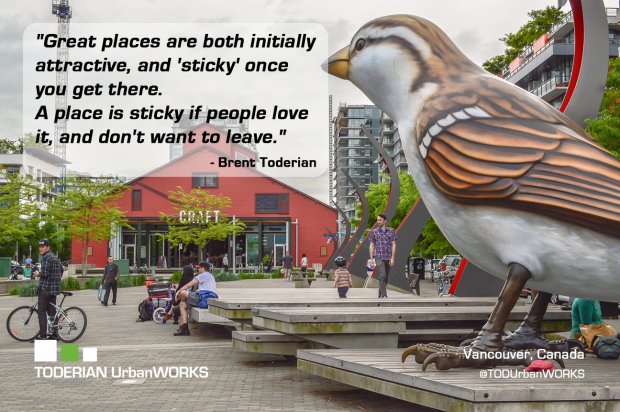Creating Sticky Streets
By TH!NK by IBI
Date
September 29, 2017A recently article on Torontoist argues that Toronto needs stickier streets. While that may initially sound like an odd title, a “sticky” street is simply one where people want to stay. Sticky streets are beautiful streets that do more than just move people, they also create a place. To create stickier streets is to create more opportunities to live a public life.
The term “sticky streets” was first coined by Urban Planner Brent Toderian. He created this term to counter the idea that a great street was only about the successful movement of cars, pedestrians, and bikes. He noted that transportation engineers measured the success of a street primarily by this factor, and found it difficult to measure the uncountable things that make streets great. He describes the factors of a sticky street as:
“Things like patios, food carts or trucks combined with attractive seating, street performers, or just really lively store windows that draw a crowd, all contribute to making a street more “sticky.” … A street is sticky if as you move along it, you’re constantly enticed to slow down, stop and linger to enjoy the public life around you.”
How do we get streets to be sticky? Both formal and informal methods can be applied to our existing spaces, and redesigns can also play a role. Whether it’s a change in city guidelines or the use of tactical urbanism, there’s a lot of low hanging fruit to quickly improve the stickiness of a street.
The next step is to start to design better streets. Rather than designing streets to focus on only the movement of people through them, we can incorporate design elements that encourage people to stay, such as better lighting, safer crosswalks, and increased shade.








